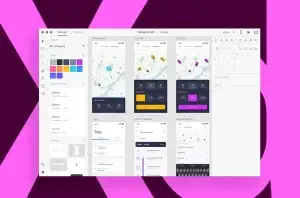
- The Indecisive Client
One of the most common problematic clients is the indecisive one. They frequently change their minds and struggle to make decisions, often leading to project delays and frustration.
How to avoid conflicts:
- Set clear milestones and deadlines from the beginning.
- Encourage the client to provide feedback and make decisions in a timely manner.
- Offer guidance and expertise to help them make informed choices.
- The Micromanager
The micromanager client wants to be involved in every step of the design process, often questioning your expertise and decision-making.
How to avoid conflicts:
- Establish trust by showcasing your portfolio and explaining your design process.
- Provide regular updates to keep them informed without overwhelming them with every detail.
- Set boundaries and politely remind the client of your expertise when necessary.
- The Unrealistic Expectations Client
This type of client has grand ideas but may not understand the limitations of time, budget, or technology.
How to avoid conflicts:
- Clearly explain the feasibility of their ideas and offer alternative solutions when necessary.
- Be transparent about the project scope, timeline, and costs.
- Manage expectations by outlining potential challenges and how they can be addressed.
- The Disappearing Client
The disappearing client is difficult to reach and often unresponsive to communication efforts.
How to avoid conflicts:
- Set clear communication expectations from the start, including preferred channels and response times.
- Schedule regular check-ins or progress meetings to maintain engagement.
- Document all communication and decisions to prevent misunderstandings.
- The Late-Paying Client
Dealing with late payments can be frustrating and harm your cash flow.
How to avoid conflicts:
- Establish a clear payment schedule and include it in the contract.
- Send gentle reminders and follow up on overdue payments.
- Consider charging late fees or requiring an upfront deposit for future projects.
Conclusion:
Navigating problematic web design clients can be challenging, but by implementing these strategies, you can reduce conflicts and maintain a healthy working relationship. Always remember the importance of clear communication, setting boundaries, and managing expectations. By doing so, you can foster a productive and positive partnership with your clients and create exceptional web designs that meet their needs.




